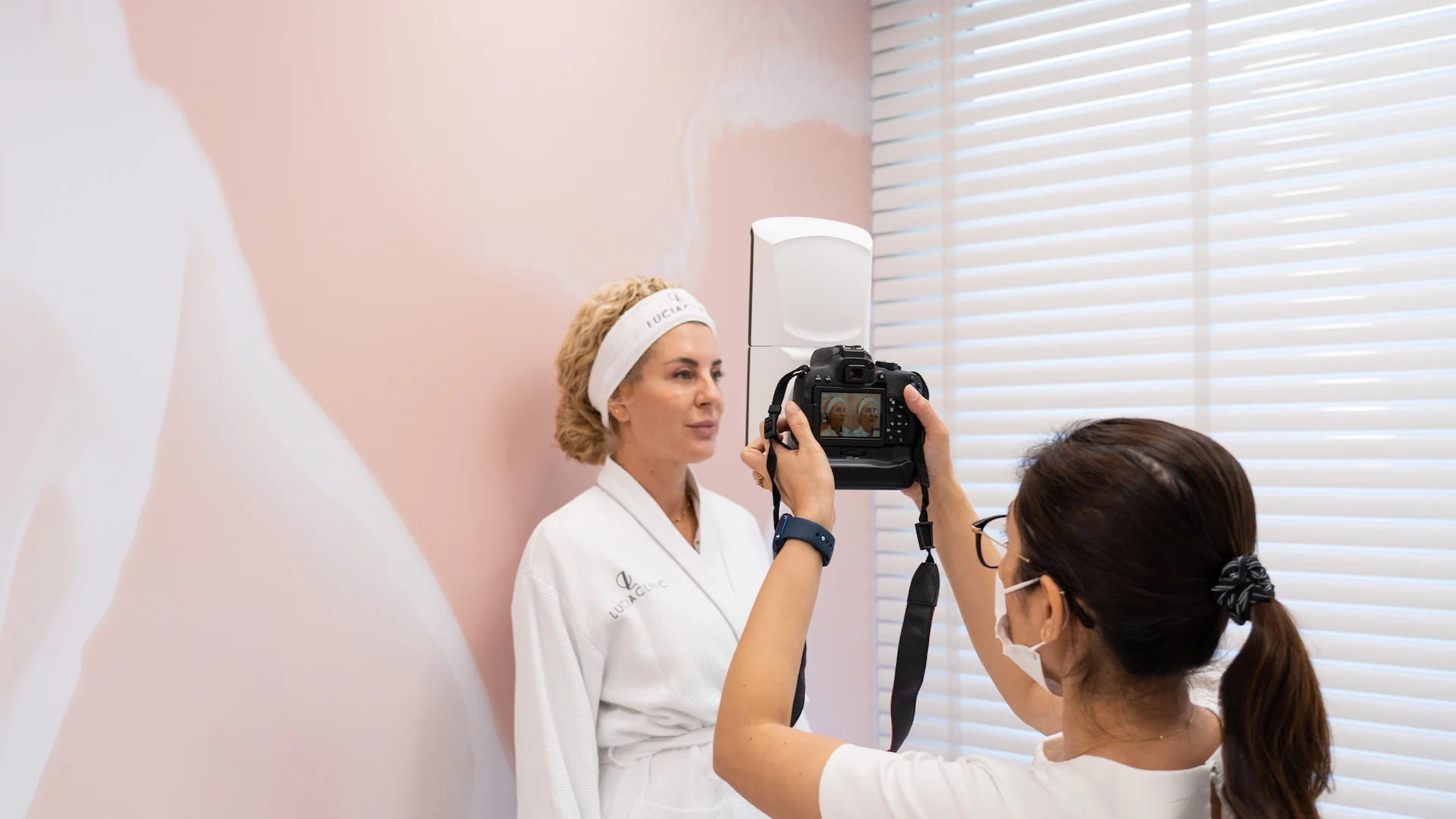HOW DOES 3D SKIN ANALYSIS CAMERA WORK?
This 3D imaging system for the face is straightforward, simple, and fast. The skin specialist takes 3 photos of the patient’s face and reconstructs them in 3D. The images have the highest quality and very precise shows even the smallest changes in the patient’s face that are not visible to the naked eye. Reproducible images can be managed without repositioning because of dual beam pointers. This is vital for precise comparison of images that were obtained after an hour or days, weeks or months.
This system of 3D imaging has revolutionized the patient’s journey toward clear determination of his/her aesthetic goals.
Before the treatment, the patient can have 3D consultation and see the exact measurements of the face, simulation of the procedure and precise skin analysis.
3D lets the patient uniquely represent his/her facial shape from all angles. This system, combined with anatomical reference points, is the best way to get comparable and standardized photos during the patient’s visits. Regular 2D images can’t illustrate aesthetic treatments for volume changes.
By 3D evaluation of the patient’s morphology, the patient can quickly decide if the desired treatment is right for him/her. Stimulation of aesthetic treatments helps the patient actually to see the desired results on the face. It also helps adjust and customize the treatment to suit the patient’s specific aesthetic needs.
HOW DOES A 3D ANALYSIS CAMERA HELP WITH FACIAL ASSESSMENT?
3D skin analysis helps the patient see everything that concerns him/her about the facial skin – pores, oiliness, wrinkles, pigmentation, vascularization, and skin texture.
The depth of pores or wrinkles is challenging to measure with 2D images. But 3D imaging enables objective measurement of these facial issues.
The skin therapist can create a full report about the skin changes by using multivariate analysis. Each difference in the facial skin can be precisely measured and highlighted with different colors for better visualization. The report can show the score of wrinkles, pores, brown and red spots and others. It can even show the differences between the left and right sides of the face. If one side is worse, the skin therapist can focus more on that facial area with the appropriate treatment.
For example, it can show the location of brown spots on the patient’s face, which makes the treatment of removing them even more effective. If hyperpigmentation is just on the epidermis, the skin therapist can recommend a superficial medical peel. If the hyperpigmentation is more profound, the skin therapist can suggest different laser techniques. The treatment is chosen according to the 3D analysis.
Another common skin issue is redness and telangiectasia or small dilated blood vessels. The skin therapist can locate the enlarged blood vessels with 3D camera analysis and suggest the proper treatment.
This system enables precise comparison of measurements of ratio, length, angles and width before and after the treatment.
By calculating the variations in volume in the treated facial area, the skin therapist can precisely determine when the patient needs additional touch-up treatment.
Shape evolution can be quickly assessed by overlaying before and after photos to confirm the procedure results. This way the patient clearly understands what he/she can expect from the treatment. The differences in before and after photos can be also better illustrated by sliding them side-to-side.
For viewing the specific targeted areas, the before and after photos can be overlapped. This way the skin therapist and the patient can concentrate on each detail separately.
Before and after a facelift, for example, the 3D image can evaluate skin lifting and firming. The patient can see the results of the procedure and how much his/her facial skin is lifted and improved.
3D analysis camera can also be used to evaluate and document skin changes like acne, acne scars, keloid scars, wounds and burns.
WHAT ARE THE BENEFITS OF A 3D ANALYSIS CAMERA?
This advanced technology helps skin therapists to give a proper evaluation and diagnosis of various skin issues and aesthetic conditions.
With precise evaluation, skin therapists can recommend the most effective treatment and thus provide their patients with the best results.
With 3D imaging, the patients can see the improvements their treatments have brought to their skin, especially if they need to have several treatment sessions to achieve the best outcomes.






